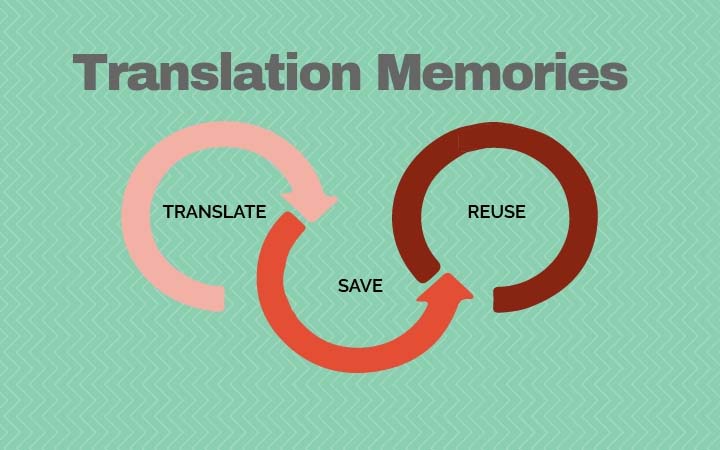Dig a little into the world of translation and it won’t take long until you come across translation memories (TM) and computer-assisted translation (CAT) tools. These should not be confused with automatic machine translation tools like Google Translate; these are tools to aid human translation and can help translators in their work, reducing their rate and taking less time, helping clients receive their translations faster and at a cheaper rate.
What is a Translation Memory (TM)?
A translation memory is a database that contains translation segments, such as sentences or paragraphs, that have been previously translated. They contain the source text and the target text in pairs known as translation units and are often used with CAT tools for large projects where text can be repeated. These memories are developed as a translator or team of translators translate, or they can be created by a client to aid the translator.
In cases where there are large quantities of text with near identical copy, such as product listings, these can be used to quickly apply translations in multiple instances thus allowing the translator to provide a discount for fuzzy matches (matches that may be less than 100% perfect). When needed, the translator reviews each 100% match segment and makes sure that the matches are correct while taking the context into account.
How can they be used?
While translation memories and CAT tools can be useful in all sorts of translations, they are best applied in cases of repetitive, technical text with specialized language – think a product manual rather than a novel. The translator or client creates a translation memory, providing translations of segments of the source text parallel to the target text, thus making large projects much quicker.
According to SDL Trados, a giant in the world of CAT tool software, recurring phrases and statements can make up more than 40% of copy for texts including websites, sales tools, product documentation and more – that’s a huge percentage and so it’s no surprise that appropriate use of CAT tools and translation memories can lead to quicker turnaround and potential discounts.
What are the benefits of using a CAT tool?
Translation memories and CAT tools have myriad benefits, first and foremost being the reduction in workload for translators. This means that translation costs can be far lower for texts where there is a large amount of identical copy, with many companies offering discounts to reflect this repeated content. Another benefit is the quicker turnaround, with the software remembering the translated material and identifying where the same segment is later used in text.
The accelerated process also means that translation style is more likely to be consistent throughout so a phrase that could be translated multiple ways is only translated in one consistent way throughout. The software also ensures that every part of the text is translated, while also maintaining consistency among multiple translators in their style if it’s a particularly large project.
In short, translation memories and CAT tools can make translations cheaper with budgets adjusted for their use, not to mention making translations more consistent and quicker, helping both the translator and their client to get the best out of the technology.





1 Comment